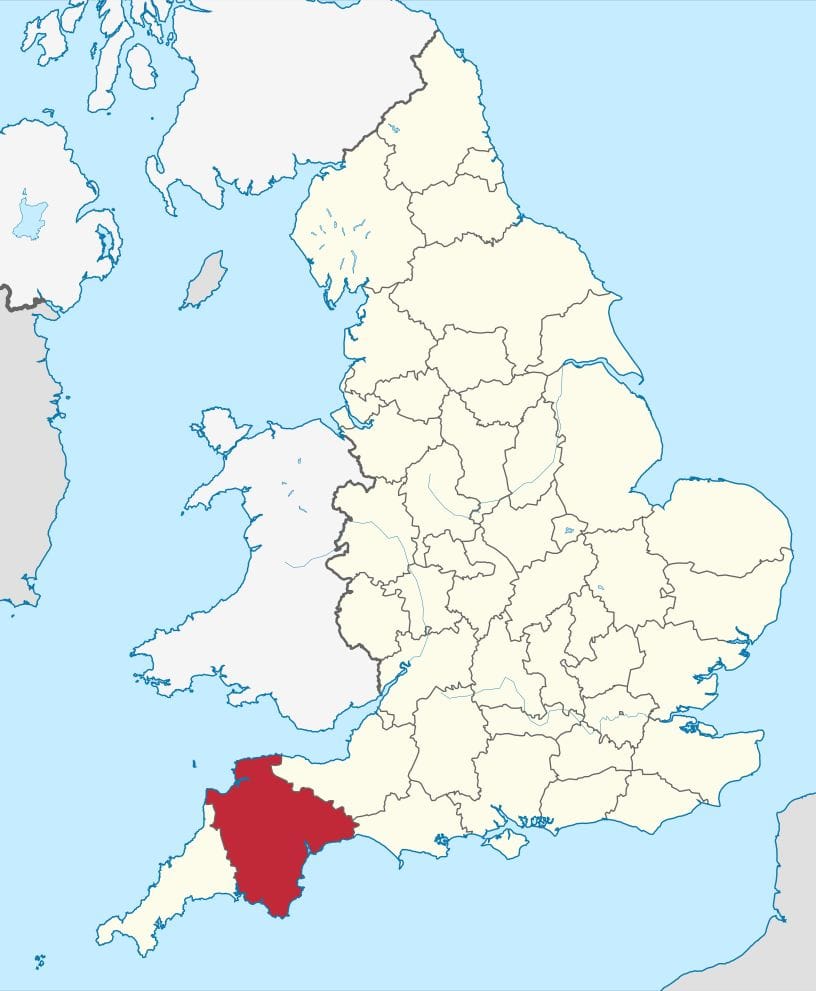
Devon, a ceremonial county nestled in the heart of South West England, is a place that captivates with its rich tapestry of history, breathtaking landscapes, and a deeply rooted sense of identity. From its ancient origins tracing back to the ‘deep valley dwellers’ of Proto-Celtic times to its modern status as a vibrant hub of culture and commerce, Devon offers a compelling narrative for anyone eager to explore the essence of British heritage.
More than just a geographical location, Devon is a living story, shaped by millennia of human occupation, dramatic geological shifts, and a unique ecological balance. It’s a county where the past gracefully intertwines with the present, inviting residents and visitors alike to discover its many layers – from the rugged beauty of its national parks to the tranquil charm of its coastal towns.
Join us as we embark on a journey to uncover the multifaceted identity of Devon, revealing the core elements that define this remarkable English county. We’ll start by exploring its very name and the echoes of ancient civilizations, then delve into its stunning geography, unique geology, and vibrant natural world, before looking at the administrative structures that help govern this cherished region.

1. **The Enduring Echoes: Devon’s Name and Ancient Origins**The very name ‘Devon’ resonates with deep historical roots, deriving from the Brythons who inhabited the southwestern peninsula of Britain during the Roman conquest. Known as the Dumnonii, their name is thought to mean ‘deep valley dwellers,’ a descriptive title stemming from the Proto-Celtic word *dubnos, signifying ‘deep.’ This ancient designation offers a glimpse into the landscape that defined these early inhabitants and how their environment shaped their identity.
Across the Brittonic languages, Devon’s name maintains this profound connection to its topography. In Welsh, it is known as Dyfnaint; in Breton, Devnent; and in Cornish, Dewnens. Each of these variations faithfully translates to ‘deep valleys,’ underscoring a consistent theme in how the region was perceived and named by its indigenous peoples. This linguistic lineage highlights a shared cultural and geographical understanding that has persisted for centuries.
William Camden, in his influential 1607 edition of Britannia, further elaborated on Devon’s historical context, describing it as part of an older, broader country that once encompassed Cornwall. He noted that the habitation of these ancient Britons was “somewhat low and in valleys,” a dwelling manner called Dan-munith in British tongue, echoing the ‘Low valleys’ meaning of Duffneit, the name by which the Britons then knew the province next adjoining.
While ‘Devon’ is the standard term used for everyday purposes, such as “Devon County Council,” the historical variant ‘Devonshire’ has endured in specific contexts. Examples include the “Devonshire and Dorset Regiment” (until 2007) and “The Devonshire Association.” Anglo-Saxon texts from before 1000 CE refer to both Defnas (the ‘people of Devon’) and Defenasċīre (‘Shire of the Devonians’), with the latter translating to modern English as Devonshire, suggesting its origin around the 8th century.

2. **A Tapestry of Time: Human Occupation and Historical Milestones**Devon’s human story stretches back tens of thousands of years, with archaeological evidence painting a vivid picture of continuous occupation. Kents Cavern in Torquay stands as a testament to this ancient past, having yielded human remains dating back an astonishing 30 to 40,000 years. Later, around 6000 BC, Mesolithic hunter-gatherer peoples are believed to have made Dartmoor their home, adapting to its rugged terrain and abundant resources.
The Roman Empire exerted its influence on the area for approximately 350 years, maintaining military occupation. Following the Roman withdrawal in AD 410, the region entered the Sub-Roman period, during which a prominent Dumnonii family attempted to establish a dynasty, ruling over Devon as the new Kings of Dumnonii. This era marked a transition, where indigenous power structures re-emerged in the wake of imperial retreat.
Around 600 AD, Devon began to experience Saxon incursions from the east, initially as small bands of settlers along the coasts of Lyme Bay and southern estuaries. These initial movements gradually evolved into more organized pushes from the east, transforming Devon into a frontier between Brittonic and Anglo-Saxon Wessex. By the mid-ninth century, the county was largely absorbed into the powerful kingdom of Wessex, marking a significant shift in its political and cultural landscape.
Remarkably, a genetic study conducted by the University of Oxford and University College London unveiled distinct genetic groups within Cornwall and Devon, with a division that almost precisely followed the modern county boundary along the River Tamar. Furthermore, Devon’s population exhibited unique characteristics compared to the rest of Southern England, showing similarities with modern northern France, including Brittany. This fascinating research suggests that the Anglo-Saxon migration into Devon was limited, implying a period of cultural integration rather than a complete displacement of the existing population.
Devon has also borne witness to numerous conflicts and societal changes throughout the centuries. Danish raids sporadically targeted coastal areas between 800 AD and the Norman Conquest, impacting sites like the silver mint at Hlidaforda Lydford in 997 and Taintona in 1001. The county was also a hotbed for anticlerical movements in the Later Middle Ages, such as the satirical Order of Brothelyngham in 1348, which humorously, yet firmly, challenged religious authority. It played a part in the Wars of the Roses, Perkin Warbeck’s rising, the Prayer Book Rebellion of 1549, and the English Civil War, and was the landing place of William of Orange for the Glorious Revolution of 1688 at Brixham. Devon’s long history includes tin, copper, and other metal mining, with tin miners enjoying considerable independence through the Stannary Convocation, which dates back to the 12th century.

3. **A Realm of Contrasts: Devon’s Unique Geography and Dual Coastlines**Devon holds a unique distinction among English counties, straddling a peninsula that blesses it with two distinct coastlines. To the north, it meets the Bristol Channel and the Celtic Sea, while to the south, it borders the English Channel. This dual frontage offers an extraordinary variety of maritime experiences and stunning vistas, all connected by the South West Coast Path, with approximately 65% of its length designated as Heritage Coast.
Inland, the county is equally captivating, dominated by the majestic Dartmoor National Park, which lies entirely within Devon, and the expansive Exmoor National Park, shared with neighbouring Somerset. These two upland moors are not only sources for most of Devon’s rivers, including the Taw, Dart, and Exe, but they also provide dramatic, wild landscapes that contrast beautifully with the county’s attractive rolling rural scenery and picturesque villages dotted with charming thatched cob cottages. These diverse features collectively contribute to Devon’s enduring appeal as a popular holiday destination.
The southern reaches of Devon present a landscape characterized by gentle rolling hills, punctuated by quaint small towns such as Dartmouth, Ivybridge, Kingsbridge, Salcombe, and Totnes. The principal seaside resorts on this southern coast, Torquay and Paignton, have long drawn visitors with their vibrant atmosphere and beautiful beaches. Moving eastward, Exmouth stands as the county’s first developed seaside resort, while Sidmouth offers a more upscale Georgian charm. Exmouth notably marks the western edge of the internationally recognized Jurassic Coast World Heritage Site, adding another layer of geological wonder to the region. The coastal railway line between Newton Abbot and the Exe Estuary is a scenic highlight, offering dramatic red sandstone cliffs and breathtaking sea views.
North Devon, in contrast, reveals a predominantly rural character, with fewer major towns, though Barnstaple, Great Torrington, Bideford, and Ilfracombe serve as key centers. This northern coastline boasts some of the highest cliffs in southern Britain, including the impressive Great Hangman, a 318 m (1,043 ft) “hog’s-back” hill featuring a formidable 250 m (820 ft) cliff-face near Combe Martin Bay. Its sister cliff, the 218 m (715 ft) Little Hangman, marks the western boundary of coastal Exmoor, creating a truly spectacular natural boundary.
One of the most remarkable features of the North Devon coast is the west-facing, Atlantic-exposed Bideford Bay and Hartland Point peninsula. This unique orientation, combined with specific wind conditions and Atlantic swells, creates exceptional surfing opportunities. Consequently, the beaches of Bideford Bay—including Woolacombe, Saunton, Westward Ho!, and Croyde—are recognized as some of the main centers for surfing in Britain, drawing enthusiasts from far and wide to ride its impressive waves.
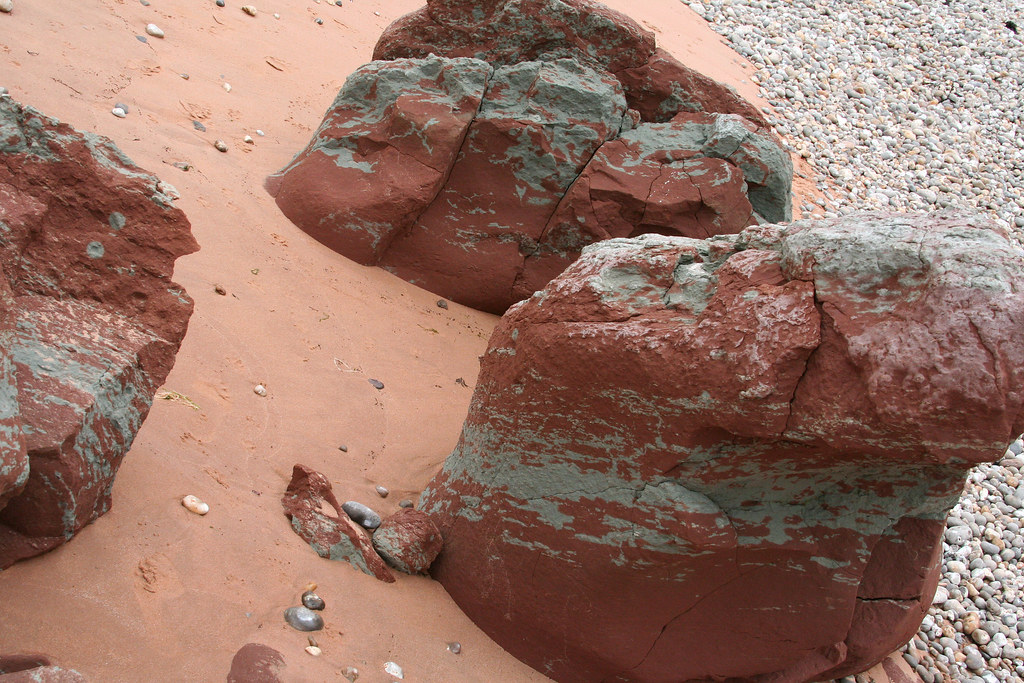
4. **Beneath the Surface: Devon’s Unique Geology and the Devonian Period**Devon’s geological story is as rich and varied as its surface landscape, marked by a significant dividing line that broadly runs along the Bristol to Exeter line and the M5 motorway east of Tiverton and Exeter. This line is part of the broader Tees–Exe line, which effectively splits Britain into a southeastern lowland zone of gently dipping sedimentary rocks and a northwestern upland zone characterized by igneous rocks and complexly folded sedimentary and metamorphic formations. This geological divide gives Devon a diverse subterranean character.
The principal geological components of Devon include the Devonian strata found in north and southwest Devon, extending into Cornwall, and the Culm Measures which dominate northwestern Devon and also stretch into north Cornwall. Central Devon is dramatically shaped by the granite intrusion of Dartmoor, a prominent part of the Cornubian batholith that forms the ‘spine’ of the southwestern peninsula. While small blocks of Silurian and Ordovician rocks exist within Devonian strata on the south Devon coast, no pre-Devonian rocks are found on the mainland, though the metamorphic rocks of Eddystone are presumed to be of Precambrian age.
The oldest rocks that can be precisely dated are those from the Devonian period, formed approximately 395 to 359 million years ago. During this ancient era, sandstones and shales were deposited beneath tropical seas in both North and South Devon. In the shallower, warmer waters of what is now near Torquay and Plymouth, extensive limestone beds were laid down. These formations provide crucial insights into the environmental conditions that prevailed millions of years ago, long before the emergence of human life.
This pivotal geological period was so profoundly defined by the distinctive rock formations found in Devon that it was named after the county by Roderick Murchison and Adam Sedgwick in the 1840s. This makes Devon the only British county whose name has been adopted worldwide as the basis for a major geological time period, a testament to its geological significance and the pioneering work of these early geologists. It’s a truly remarkable claim to fame that echoes through geological textbooks globally.
Devon’s second major rock system is the Culm Measures, a distinctive geological formation of the Carboniferous period, predominantly found in Devon and Cornwall. The name ‘Culm’ is derived either from the occasional presence of a soft, sooty coal, known locally as culm, or from the characteristic contortions commonly observed within its beds. This formation stretches from Bideford across to Bude in Cornwall, contributing to a landscape that is typically gentler, greener, and more softly rounded, contrasting with the dramatic granite of Dartmoor. It is also found on the western, northern, and eastern borders of Dartmoor itself.
Further east within the county, the sedimentary rocks include Permian and Triassic sandstones, which are responsible for the well-known fertile red soils of East Devon. These provide a rich agricultural base that has shaped the region’s farming traditions for centuries. Additionally, Bunter pebble beds are found around Budleigh Salterton and Woodbury Common, alongside Jurassic rocks in the easternmost parts of Devon. Smaller, yet significant, outcrops of younger rocks also exist, such as the Cretaceous chalk cliffs at Beer Head and gravel deposits on Haldon, along with Eocene and Oligocene ball clay and lignite deposits in the Bovey Basin, which formed approximately 50 million years ago under tropical forest conditions.

5. **The Whispers of the Atlantic: Devon’s Oceanic Climate**Devon generally experiences a cool oceanic climate, a characteristic heavily influenced by the North Atlantic Drift, a warm ocean current that moderates temperatures across the British Isles. This maritime influence plays a significant role in shaping the county’s weather patterns throughout the year, providing a generally temperate environment compared to continental regions at similar latitudes.
In winter, while snow is not entirely unheard of, it remains relatively uncommon away from the higher elevations, such as Dartmoor and Exmoor. The county typically enjoys mild winters, with average daily maximum temperatures in January hovering around 8 °C (46 °F), making it one of the mildest winter regions in the world for its high latitude. Summers are generally mild, punctuated by occasional warm spells, though cool and rainy periods are also a familiar part of the seasonal cycle.
Rainfall in Devon exhibits considerable variation across the county’s diverse topography. Parts of Dartmoor, for instance, can receive over 2,000 mm (79 in) of rain annually, reflecting its upland, exposed nature. Conversely, areas situated in the rain shadow along the southeastern coast and around Exeter experience significantly less precipitation, with annual totals around 750 mm (30 in), highlighting the localized impact of geographical features on weather patterns.
Sunshine amounts also vary widely, mirroring the disparities in rainfall. The moorland areas, with their frequent cloud cover, generally receive less than 1,400 hours of sunshine annually. In stark contrast, the southeastern coast, particularly around Brixham and Berry Head, basks in over 1,800 hours of sunshine each year, making it one of the sunniest areas within the UK. This coastal stretch benefits from more settled weather patterns and greater exposure to solar radiation.
A fascinating local climatic phenomenon occurs in the area around Torbay and Teignmouth. With westerly or south-westerly winds and high-pressure systems, these regions often experience warm, long sunny spells. This is attributed to the Foehn wind effect, where air descends on the leeward side of the high ground, warming and drying as it does so, creating unusually pleasant conditions for these sheltered coastal communities. This adds to the distinctive climatic character of Devon.
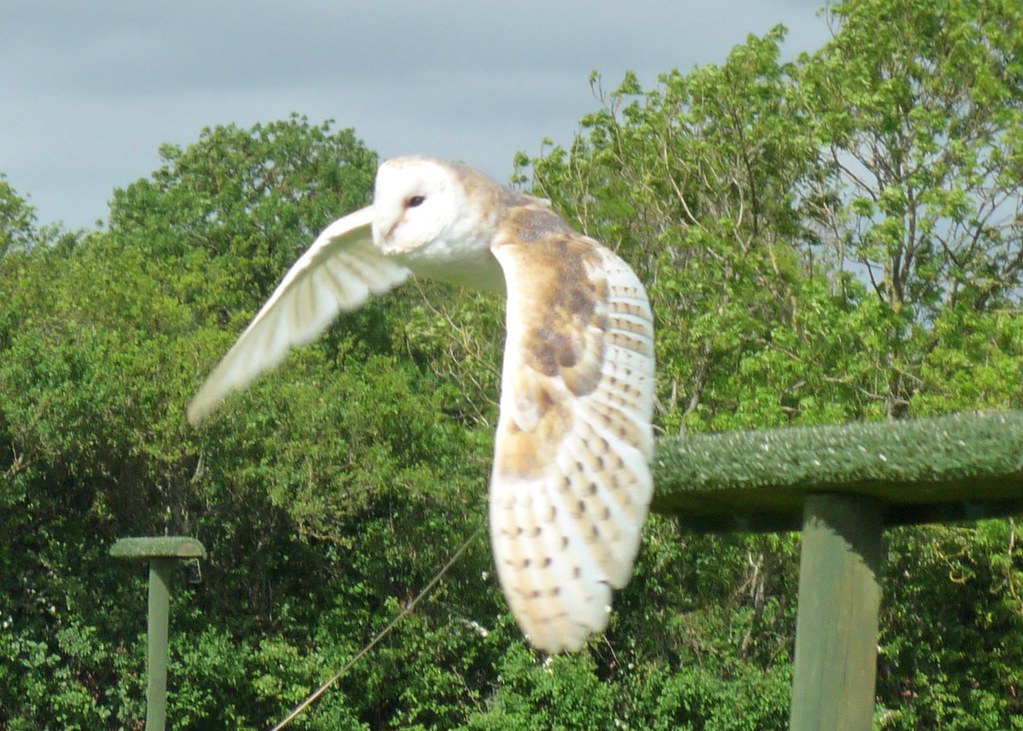
6. **A Haven for Life: Devon’s Rich Ecology and Conservation Efforts**Devon’s remarkable variety of habitats, ranging from coastal cliffs and estuaries to ancient woodlands and expansive moorlands, fosters an incredibly wide range of wildlife. This biodiversity makes the county a prime location for nature enthusiasts, with a popular challenge among birders being to spot over 100 species within the county in a single day, showcasing the sheer abundance and diversity of its avian population.
Protecting this precious natural heritage is a priority for several dedicated wildlife charities. The Devon Wildlife Trust, for instance, diligently manages and safeguards 40 nature reserves across the county, providing vital sanctuaries for countless species. The Devon Bird Watching and Preservation Society, known as “Devon Birds” since 2005 and founded in 1928, remains committed to the study and conservation of wild birds, contributing significantly to our understanding and protection of avian life in the region.
The Royal Society for the Protection of Birds (RSPB) also maintains important reserves within Devon, further bolstering conservation efforts. Natural England plays a crucial role too, overseeing more than 200 Devon Sites of Special Scientific Interest (SSSIs) and National Nature Reserves, such as the ecologically significant Slapton Ley. Additionally, the Devon Bat Group, established in 1984, actively works to conserve bat populations, recognizing their ecological importance.
Devon is recognized as a national hotspot for several species that are particularly uncommon elsewhere in Britain. These include the vibrant cirl bunting, the majestic greater horseshoe bat, the elusive Bechstein’s bat, and the striking Jersey tiger moth. Its unique habitats also make it the only place in mainland Britain where the rare sand crocus (Romulea columnae) can be found, specifically at Dawlish Warren. Furthermore, the county is home to all six British native land reptile species, partly thanks to successful reintroduction programs that have helped bolster these populations.
Recent conservation successes include the reintroduction of the Eurasian beaver, primarily along the River Otter. This initiative marks a significant step in restoring a native species to its historic range and observing its positive impact on wetland ecosystems. Other rare species recorded in Devon’s waters include seahorses and the beautiful sea daffodil, underscoring the county’s diverse aquatic life.
The county’s botany is equally diverse, boasting several rare species not found anywhere else in the British Isles apart from neighbouring Cornwall. Historical botanical records date back to the 17th century, with notable publications including a Flora Devoniensis by Jones and Kingston in 1829, and a general account in The Victoria History of the County of Devon (1906). A comprehensive Flora of Devon was published in 1939 by Keble Martin and Fraser, followed by an Atlas of the Devon Flora by Ivimey-Cook in 1984, and a New Flora of Devon in 2016, based on fieldwork conducted between 2005 and 2014.
In a fascinating sign of changing climate, rising temperatures have led to Devon becoming the first place in modern Britain to successfully cultivate olives commercially, showcasing its adaptability and evolving agricultural landscape. Looking to the future, plans were announced in January 2024 to plant over 100,000 trees in northern Devon. This ambitious project aims to support and expand Celtic rainforests—cherished yet at-risk ecosystems in the UK—by creating 50 hectares of new rainforest across three sites, strategically located near existing rainforest areas along the coast and inland. Among the tree species designated for planting is the rare Devon whitebeam, known for its unique reproduction method and once-popular fruit. This vital initiative is spearheaded by the National Trust, with enthusiastic assistance from volunteers and community groups, focusing on locations in Exmoor, Woolacombe, Hartland, and Arlington Court.

7. **Governing the Gem: Devon’s Political and Administrative Landscape**At the heart of Devon’s administrative structure lies Exeter, the county town, serving as the administrative centre and capital. However, the governance of Devon is characterized by a unique arrangement, reflecting its diverse population centers. The largest city in Devon, Plymouth, a historic port, along with the conurbation of Torbay—which includes Torquay (the largest town in Devon and capital of Torbay), Paignton, and Brixham—have operated as unitary authorities since 1998. This means they are administratively independent from the remainder of Devon, which is governed by Devon County Council for local government purposes.
Devon County Council, responsible for the non-metropolitan county, is currently controlled by the Conservatives. Its political representation comprises 60 councillors, including 38 Conservatives, 10 Liberal Democrats, six Labour members, three Independents, two Green Party representatives, and one from the South Devon Alliance. This composition reflects the political leanings and concerns of the county’s diverse population, shaping local policies and services.
In the broader national political arena, the 2024 general election saw Devon return a mixed representation to the House of Commons. The county’s constituencies elected six Liberal Democrats, four Conservatives, and three Labour Members of Parliament. This varied outcome underscores the dynamic political landscape within Devon, where different parties find support across its urban and rural areas.
Historically, Devon was organized into 32 hundreds, a traditional administrative division. These included regions such as Axminster, Bampton, Black Torrington, and many others, reflecting an ancient system of local governance. In a more contemporary development, Devon County Council and Torbay Council are constituent members of the Devon and Torbay Combined County Authority. This authority has been granted devolved powers over key areas including transport, housing, skills development, and support for local businesses, aiming to foster regional growth and better integrate services across the county and Torbay.
The Devon and Torbay Combined County Authority consists of 12 members, carefully structured to ensure representation and effective decision-making. Six members are constituent members with full voting rights, while four are non-constituent members who do not have voting powers unless specifically extended to them by the constituent members. Additionally, there are two associate members who cannot vote. Devon County Council and Torbay Council each select half of the constituent members, ensuring balanced representation. The non-constituent members include two selected collectively by the district councils of Devon to represent their interests, and one reserved for the Devon and Cornwall Police and Crime Commissioner, reflecting the importance of public safety. The remaining non-constituent member and the two associate members are elected by the constituent members of the authority, completing the governance framework for this collaborative body.
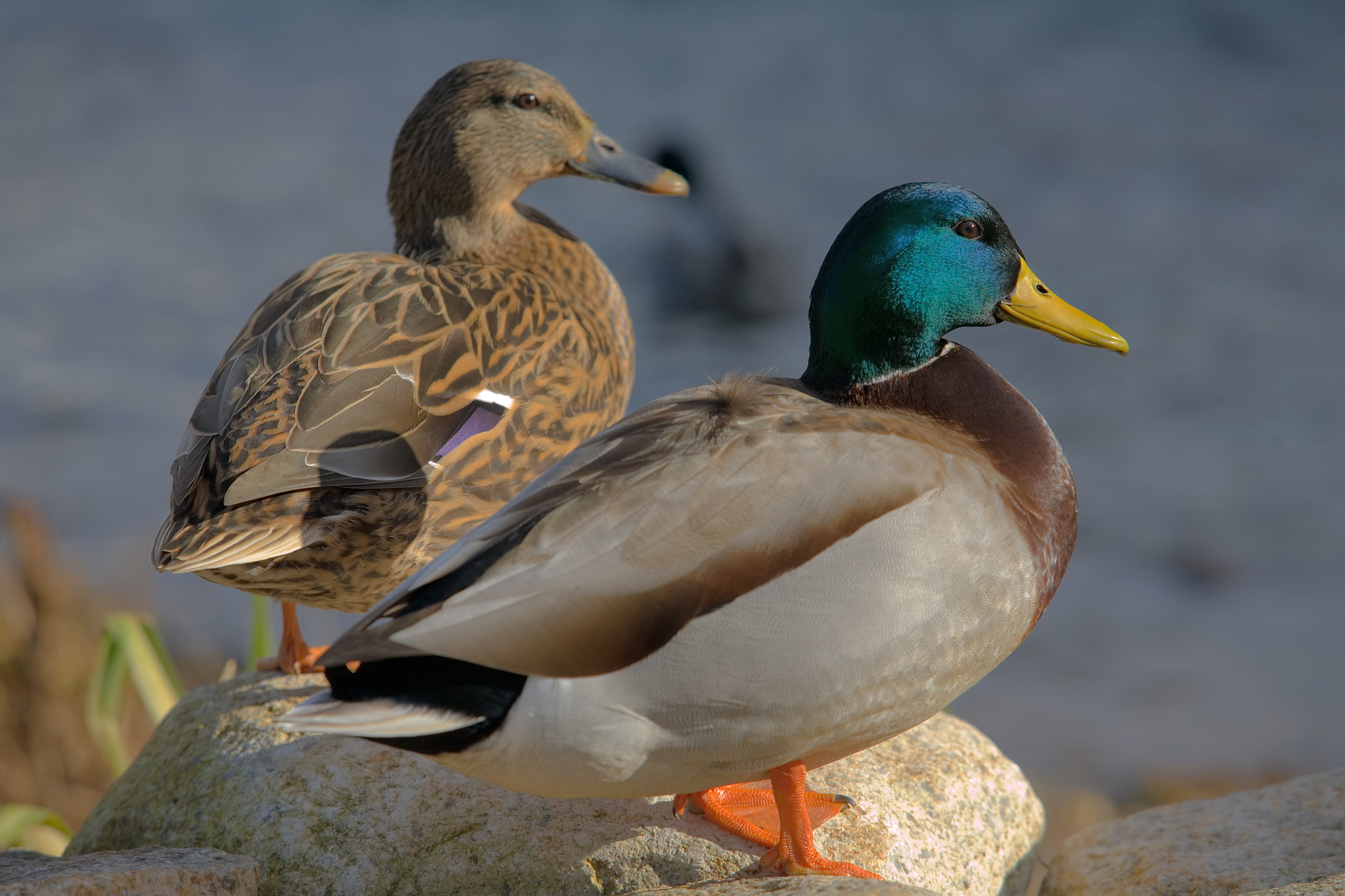
8. **Cities, Towns, and Villages: A Mosaic of Life**Devon showcases diverse urban centers and charming villages. Plymouth, a historic port, is the largest city and an administratively independent unitary authority. Exeter, the county town, serves as the administrative heart. The Torbay conurbation, encompassing Torquay, Paignton, and Brixham, is another key player, also administratively separate, forming the backbone of Devon’s population along the south coast.
The arrival of railways in the 19th century transformed many coastal locales into popular tourist resorts like Dawlish, Exmouth, Sidmouth, Ilfracombe, and Lynmouth. Beyond the coast, rural market towns such as Barnstaple, Bideford, Honiton, and Tiverton dot the interior, each with its own history, serving as vital centers for agricultural communities.
Historically, Devon’s boundary with Cornwall wasn’t always fixed at the River Tamar. Until the late 19th century, parishes near Torpoint were in Devon, and five parishes now in north-east Cornwall were part of Devon until 1974. This fluid historical demarcation reveals a shared heritage and complex narrative.

9. **Threads of Faith: Devon’s Religious Tapestry**Devon’s spiritual landscape is ancient, tracing back to the pre-Roman Dumnonii Celtic tribe and early Celtic paganism. Christianity was introduced in the mid-fourth century AD, leading to Celtic Christianity during the Sub-Roman period. Many Cornish saints, like Saint Petroc, are revered, with the county flag dedicated to him, showcasing an enduring spiritual legacy.
As Devon was incorporated into Wessex, Western Christianity became established. Episcopal seats moved from Tawton to Crediton, birthplace of St Boniface. By 1050, the dioceses of Crediton and Cornwall united under Bishop Leofric, who became the first Bishop of Exeter, firmly anchoring the region’s Christian structure at the city’s abbey church.
The Prayer Book Rebellion of 1549 marked a tragic chapter during the English Reformation. Methodism, introduced by John Wesley, gained immense popularity among Devon’s working classes in the 19th century. Today, the Anglican Diocese of Exeter covers all of Devon, and the Roman Catholic Diocese of Plymouth was established in the mid-19th century. In 2019, Saint Boniface was officially recognized as the Patron Saint of Devon.
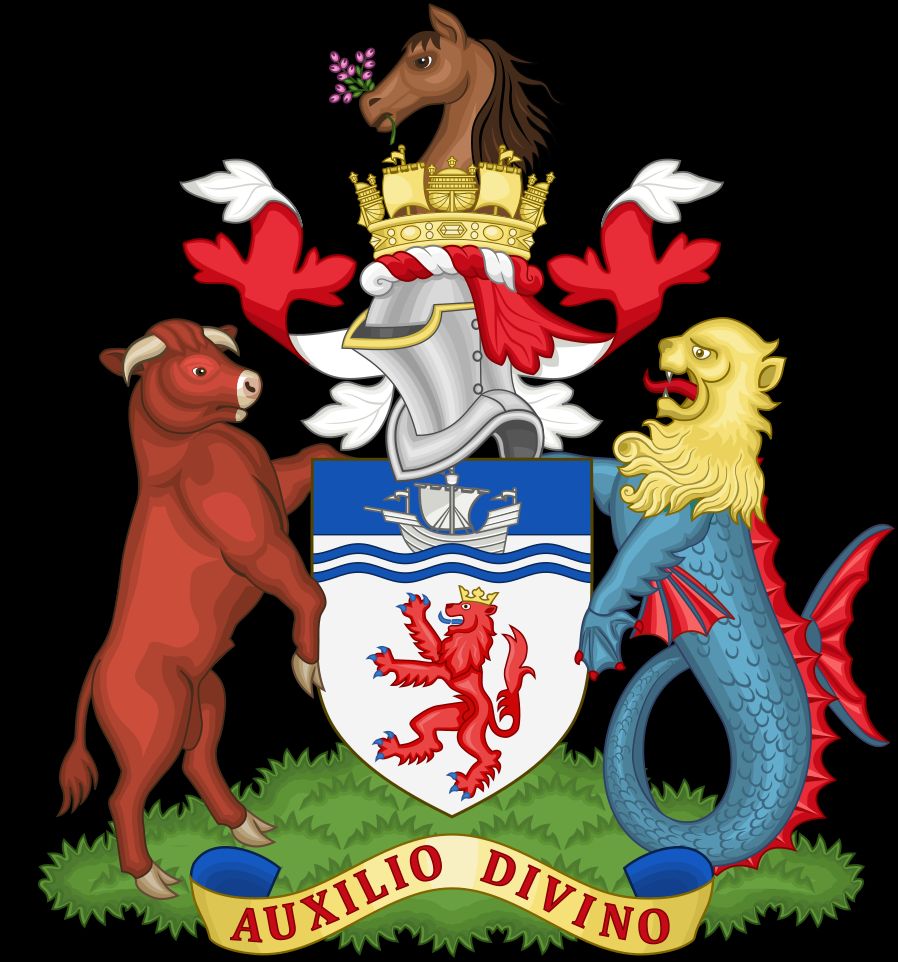
10. **Symbols of Identity: Emblems of Devon**Devon’s identity is beautifully encapsulated in its official symbols. For years, the county lacked an established coat of arms, often borrowing Exeter’s. The county council formed in 1888, adopting an initial common seal with Exeter’s arms and those of its first chairman and vice-chairman.
A significant milestone arrived on October 11, 1926, with a formal grant of arms. The central shield displays a red crowned lion on a silver field, homage to Richard Plantagenet, Earl of Cornwall. An ancient ship upon wavers symbolizes Devon’s deep-seated seafaring traditions. The Latin motto, “Auxilio Divino” (by Divine aid), from Sir Francis Drake, cements this maritime and historical connection.
The evolution continued with a grant on March 6, 1962, adding a crest and supporters. The crest features a Dartmoor Pony rising from a “Naval Crown,” underscoring ties to the Royal Navy. Flanking the shield are a robust Devon bull, representing agricultural heritage, and a graceful sea lion. Devon also boasts its own flag, dedicated to Saint Petroc, adopted in 2003, and officially recognized in 2006.
11. **Echoes in Names and Traditions: Devon’s Unique Culture**Devon’s cultural fabric is richly woven with ancient language and time-honored customs, visible in its distinctive place names and vibrant festivals. Names frequently end in “coombe/combe” (valley) and “tor” (granite formations). These rare Celtic loanwords in English, prevalent in Devon, bordering historically Brittonic-speaking Cornwall, are a linguistic testament to the region’s deep Celtic roots.
The landscape itself tells a story through settlement patterns. Ruined medieval Dartmoor longhouses suggest early dispersed rural settlements, known as ‘tun’ (now often ‘-ton’), resembled Cornish ‘tre-‘ settlements. In Devon, these are typically described with the placename suffix ‘-(a)cott,’ derived from the Old English for homestead. Larger settlements often bear Saxon endings like ‘-worthy,’ while ‘Bere’s indicate wood groves and ‘leighs’ signify clearings.
Devon isn’t just a place of historical names; it’s alive with cherished traditions and lively festivals. The orchard-visiting Wassail in Whimple, celebrated every January 17, invokes ancient blessings for a good harvest. Then there’s the spectacular carrying of flaming tar barrels in Ottery St. Mary for Bonfire Night, where residents bravely run through crowds with burning barrels.

12. **The Pulse of Prosperity: Devon’s Evolving Economy**Devon’s economy, once disadvantaged by declining core industries like fishing, mining, and farming, has transformed into a diverse and resilient landscape. In 2019, its total economic output exceeded £26 billion, surpassing Manchester or Edinburgh. A 2021 report highlighted “health, retail and tourism” accounting for 43.1% of employment. Agriculture remains vital, with parts diversifying and recovering, fostering a robust local food sector.
The COVID-19 pandemic presented formidable challenges, with impacts “as severe as any in living memory.” Yet, Devon showed remarkable resilience. Between 2014 and 2016, its attractive lifestyle drew new industries, like digital and financial services on Dartmoor. The Met Office relocated to Exeter in 2003, and Plymouth hosts The Range’s head office, the only major national retail chain headquartered in Devon.
The tourism sector, revived from a mid-20th-century decline, is now a major driver, bolstered by national parks and World Heritage Sites. In 2019, visitor spend neared £2.5 billion, driven by food and drink, coastal walks, cycle routes, watersports, surfing, and sailing. While incomes vary, pockets of deprivation exist with some of the lowest earnings in the UK, highlighting economic disparities.
13. **Connecting the County: Devon’s Transport Networks**Devon’s transport infrastructure is a vital circulatory system for residents and visitors. The bus network is crucial, with Stagecoach South West operating 93% of services in 2021. Smaller operators like Dartline and Plymouth Citybus also contribute. Devon County Council, through DevonBus, oversees and coordinates bus transport, aiming to improve the network and create a unified brand.
Rail transport is predominantly managed by Great Western Railway, offering regional, local, and suburban services, as well as inter-city connections to London Paddington, Plymouth, and Penzance. CrossCountry extends services north to major cities like Manchester and Edinburgh, and South Western Railway runs hourly services between London Waterloo and Exeter St Davids. All train services within Devon are diesel-hauled.
A notable success has been the reopening of Okehampton station in November 2021 for regular passenger services to Exeter, reversing Beeching cuts from 1972. Proposals exist to reopen the line from Tavistock to Bere Alston for through service to Plymouth. Reconnecting Tavistock and Okehampton is also discussed after the railway’s sea wall damage at Dawlish in 2014, underscoring the need for resilient alternative routes.

14. **Voices of the Land: Notable Devonians**Devon has long been a fertile ground for exceptional individuals who have left an indelible mark on history and culture. While specific biographies aren’t detailed, the “Notable Devonians” section points to a rich lineage of distinguished figures. These individuals, whether born here or having made Devon their base, embody the spirit and diverse talents nurtured by this unique region.
From intrepid explorers to pioneering scientists, Devonians have consistently contributed to significant advancements. The county’s strong seafaring heritage hints at celebrated maritime heroes—perhaps navigators or commanders—whose legacies are interwoven with Britain’s global story. Sir Francis Drake, referenced in the county’s motto, points to a figure whose daring spirit is a source of immense local pride. Artistic and literary figures too have drawn inspiration from Devon’s breathtaking landscapes.
Devon’s long and complex history, from ancient Dumnonii kings to later medieval conflicts, suggests a procession of influential political leaders, social reformers, and figures instrumental in shaping local governance and national events. Their decisions and actions molded the Devon we see today, offering insights into the struggles and triumphs that have defined the region. To truly understand Devon is to appreciate the collective impact of its people.
As our journey through Devon concludes, it’s clear that this ceremonial county is far more than just a dot on the map of South West England. It’s a vibrant, living entity, deeply rooted in ancient history yet constantly evolving. From the echoes of its Brythonic past to the cutting-edge innovations in its economy, from the dramatic geological features that shaped the very Devonian period to the intricate web of conservation efforts protecting its unique ecology, Devon truly offers an unparalleled blend of natural beauty, cultural depth, and human endeavor. Its charming towns and villages, rich religious heritage, proud symbols, and timeless traditions all converge to create a place that is as captivating as it is enduring. Devon is a testament to the power of place, a county that doesn’t just hold history but actively lives it, inviting everyone to discover its boundless charm and enduring spirit.


